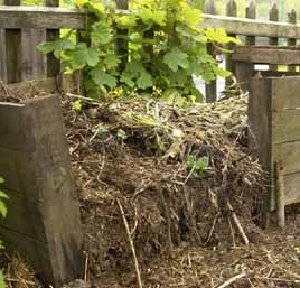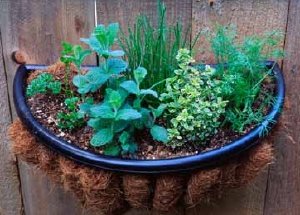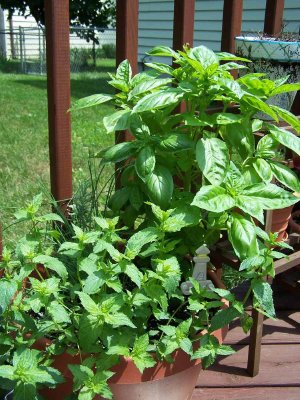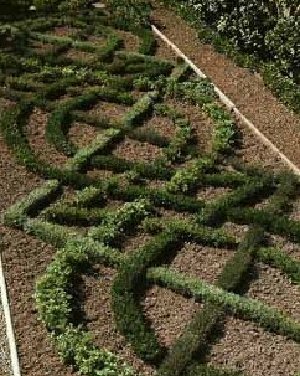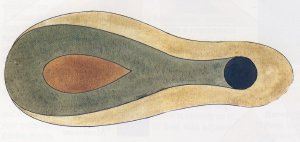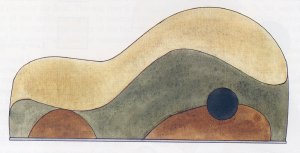Good soil is the key to an easy-to-maintain garden. While most herbs are pretty hardy and require little care, you'll still find that a little preparation goes a long way. Improving Your Garden Soil
Good soil is 50 percent solids and 50 percent porous space, which provides room for water, air, and plant roots. The solids are inorganic matter (fine rock particles) and organic matter (decaying plant matter). The inorganic portion of the soil can be divided into three categories based on the size of the particles it contains. Clay has the smallest soil particles; silt has medium-size particles; and sand has the coarsest particles. The amount of clay, silt, and sand in a soil determine its texture. Loam, the ideal garden soil, is a mixture of 20 percent clay, 40 percent silt, and 40 percent sand.
Culinary Herbs Image Gallery

©2006 Publications International, Ltd.
Good soil is key to healthy herbs.
See more pictures of culinary herbs.
|
Some people choose to add vegetables into the herb garden. In the interest of harvesting a bigger and better crop of herbs and vegetables, you'll want to improve the texture and structure of your soil. This improvement, whether to make the soil drain better or hold more water, can be accomplished quite easily by the addition of organic matter.
Organic matter is material that was once living but is now dead and decaying. You can use such materials as ground corncobs, sawdust, bark chips, straw, hay, grass clippings, and cover crops to serve as organic matter. Your own compost pile can supply you with excellent organic matter to enrich the soil.
Each spring, as you prepare the garden for planting, incorporate organic matter into the soil by tilling or turning it under with a spade. If noncomposted materials are used, the microorganisms that break down the materials will use nitrogen from the soil. To compensate for this nitrogen loss, increase the amount of nitrogen fertilizer that you incorporate into the soil.
The next step in your soil-improvement program is to have the soil tested for nutrient levels. The local county Cooperative Extension office can advise you on testing the soil in your area. Your soil sample will be sent to a laboratory to determine any deficiencies of the necessary nutrients needed for successful plant growth. Instructions for taking and preparing soil samples can be found in our article How to Prepare Soil for Planting.
Be sure to tell the laboratory that the samples came from an herb and/or vegetable garden plot. The test report will recommend the amount and kind of fertilizer needed for a home garden. Follow the laboratory's recommendations as closely as possible during the first growing season. We'll talk more about fertilizing below and in the next section, Herb Garden Soil Preparation Techniques.
The necessary nutrient levels are relative to the soil type and the crop being grown. Although different herbs have varying requirements, the soil test institution calculates an optimum average for fertilizer and lime recommendations.
The results of the soil test will indicate the pH (acid-alkaline balance) of the soil as well as the nitrogen content, phosphorus content, and potassium content. The pH is measured on a scale of 1 (most acid or sour) to 14 (most alkaline or sweet), with 7 representing neutral. Most vegetable plants produce best in a soil that has a pH between 5.5 and 7.5.
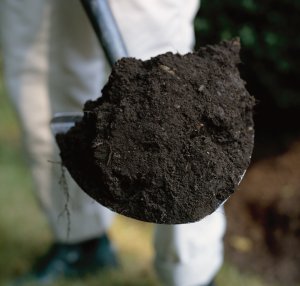
©2006 Publications International, Ltd.
To check your soil texture quickly,
squeeze lightly moist soil in your hand.
|
The pH number is important because it affects the availability of most of the essential nutrients in the soil. The soil lab will consider the type of soil you have, the pH level, and the crops you intend to produce and make a recommendation for pH adjustment.
Phosphorus (P) and potassium (K) levels will be indicated by a "Low," "Medium," or "High" level. High is the desired level for herb and
vegetable gardens for both nutrients. If your test results show other than High, a recommendation of type and amount of fertilizer will be made.
Although nitrogen (N) is also needed in large amounts by plants, the soil nitrates level is not usually routinely tested because rainfall leaches nitrates from the soil, which easily results in low levels. Additional nitrogen through the use of a complete fertilizer is almost always recommended.
Tests for other elements are available on request but are needed only under special circumstances.
Adjusting Soil pH
The soil test results may advise you to raise the pH by adding a recommended amount of lime to the soil. Ground dolomitic limestone is best and can be applied at any time of the year without harm to the plants. You may be advised to lower the pH by adding a recommended amount of a sulfur product. Ammonium sulfate is the sulfur product most commonly used. Spread the lime or sulfur evenly through your garden and incorporate it into the soil by turning or tilling.
Fertilizing: How & Why To Do It
Many inexperienced gardeners think that since their herbs have done fine so far without fertilizer, they'll continue to do fine without fertilizer next year. But it's not quite that simple. Although your plants will probably provide you with herbs without using fertilizer, you won't be getting their best effort. Properly fertilized plants will be healthier and better able to resist disease and attacks from pests, providing more and higher-quality herbs.
There are two types of fertilizers: organic and inorganic. Both contain the same nutrients, but their composition and action differ in several ways. It makes no difference to the plant whether nutrients come from an organic or an inorganic source as long as the nutrients are available. However, the differences between the two types are worth your consideration.
Organic fertilizers come from plants and animals. The nutrients in organic fertilizers must be broken down over a period of time by microorganisms in the soil before they become available to the plants. Therefore, organic fertilizers don't offer instant solutions to nutrient deficiencies in the soil. Dried
blood, kelp, and bone meal are types of organic fertilizers.
Manures are also organic. They are bulkier and contain lower percentages of nutrients than other natural fertilizers. However, they offer the advantage of immediately improving the texture of the soil by raising the level of organic matter.
Because organic fertilizers are generally not well-balanced in nutrient content, you'll probably need to use a mixture of them to ensure a balanced nutrient content. The table below, as well as the directions on the package, may be used as a guide to making your own mixture. Incorporate the mixture into the soil while preparing your spring garden. Apply it again as a side-dressing midway through the growing season.
When you fertilize with an inorganic fertilizer, nutrients are immediately available for the plant's use. Any container of fertilizer has three numbers printed on it, such as 5-10-20, to indicate the percentage of major nutrients it contains. Nitrogen is represented by the first number (5 percent in this example); phosphorus is represented by the second number (10 percent); and potassium by the third (20 percent). The remaining 65 percent is a mixture of other nutrients and inert filler. A well-balanced complete fertilizer consists of all three major nutrients in somewhat even proportions. A complete fertilizer is recommended for herb and vegetable garden use as long as the nitrogen content isn't more than 20 percent. A typical complete fertilizer used in edible gardens is 10-10-10.
Analysis of Organic Fertilizers | Fertilizer | Nitrogen - Phosphorus - Potassium (N-P-K)
|
Dried Blood
| 13 - 1.5 - 0
|
| Kelp | 3 - 22 - 0
|
Cottonseed Meal
| 6 - 2.6 - 2
|
Cattle Manure
| 0.5 - 0.3 - 0.5
|
Horse Manure
| 0.6 - 0.3 - 0.5
|
Chicken Manure
| 0.9 - 0.5 - 0.8
|
This is only the beginning in our discussion on fertilization. Keep reading to learn the two-stage program for fertilizing your garden, as well as composting and soil recycling.


